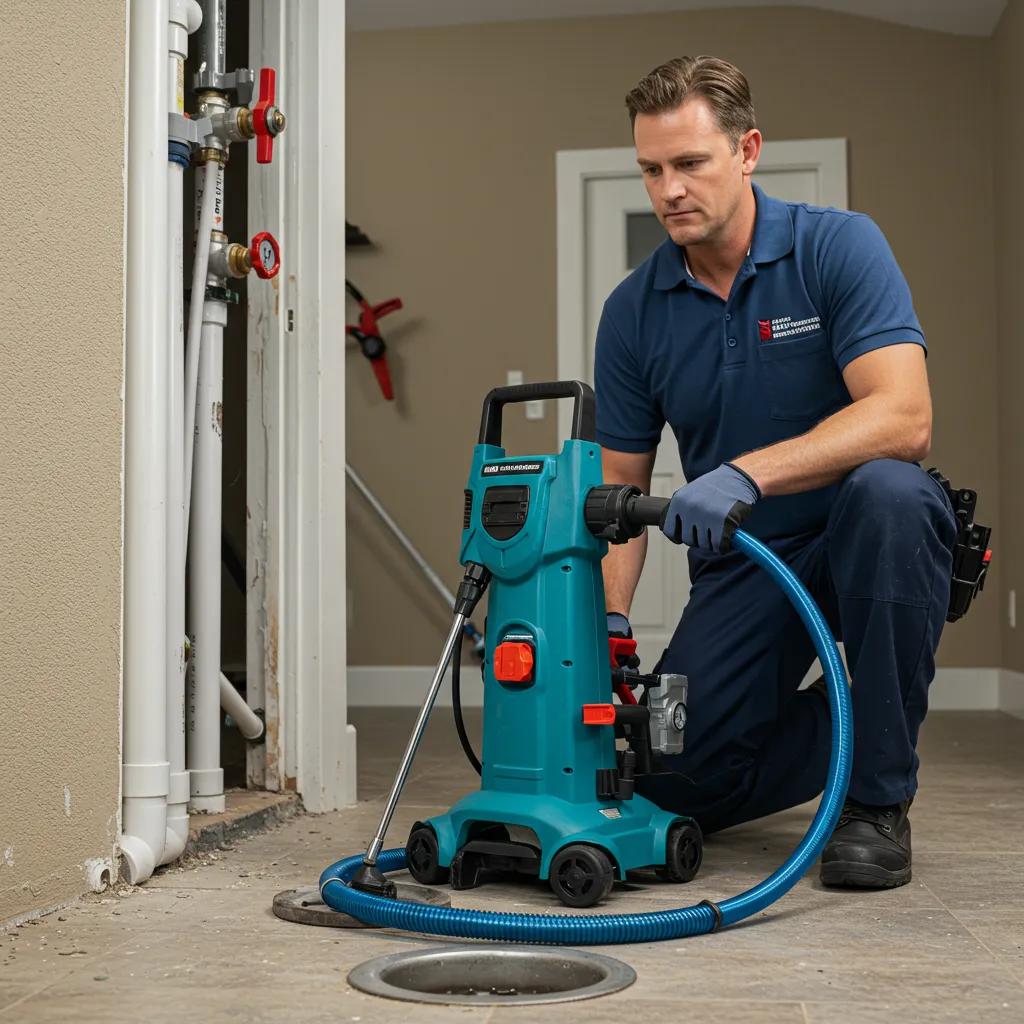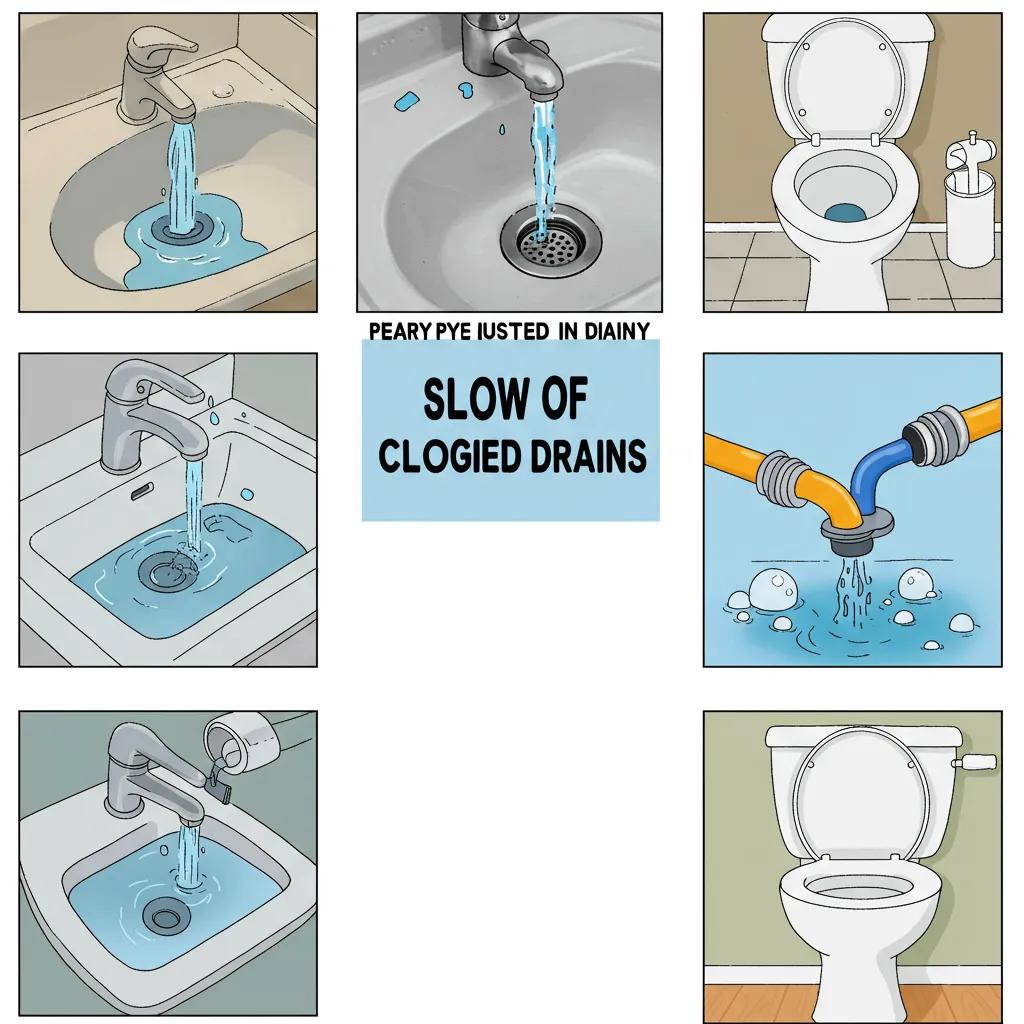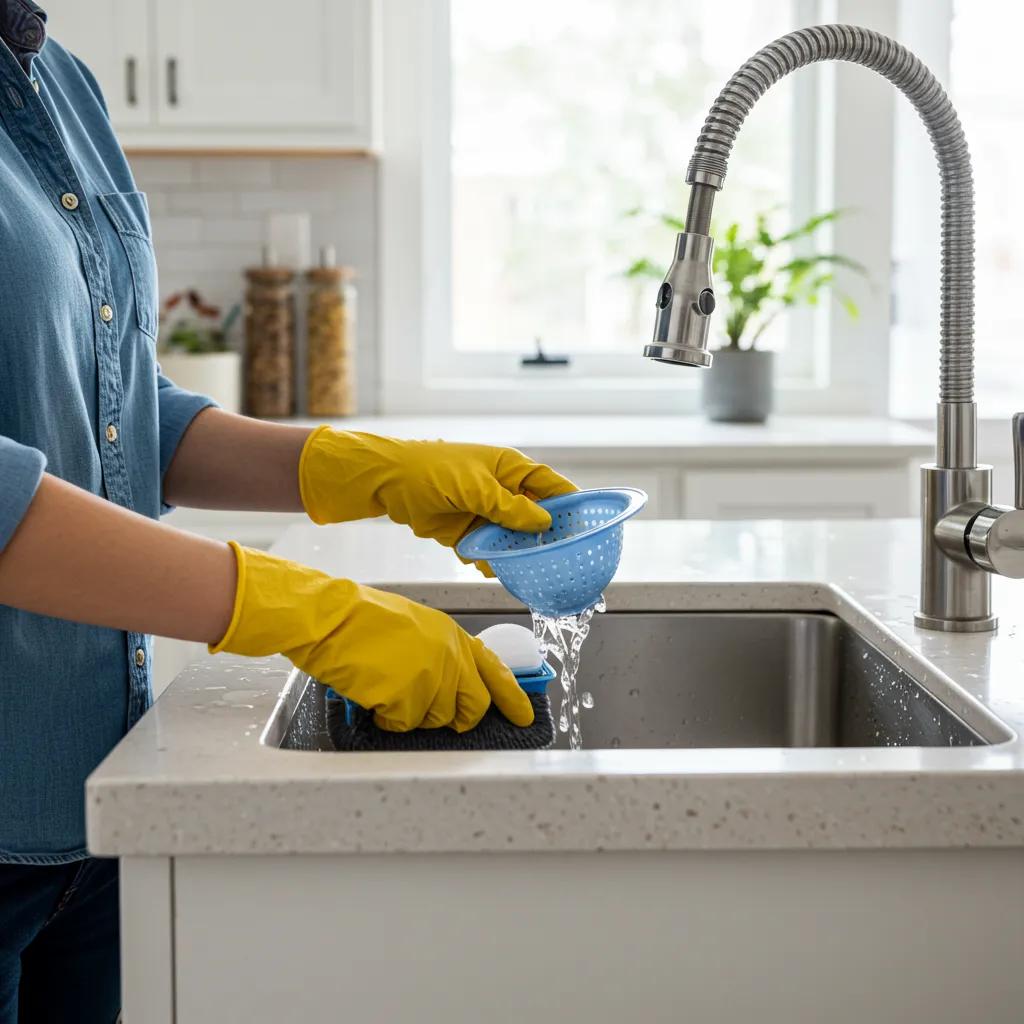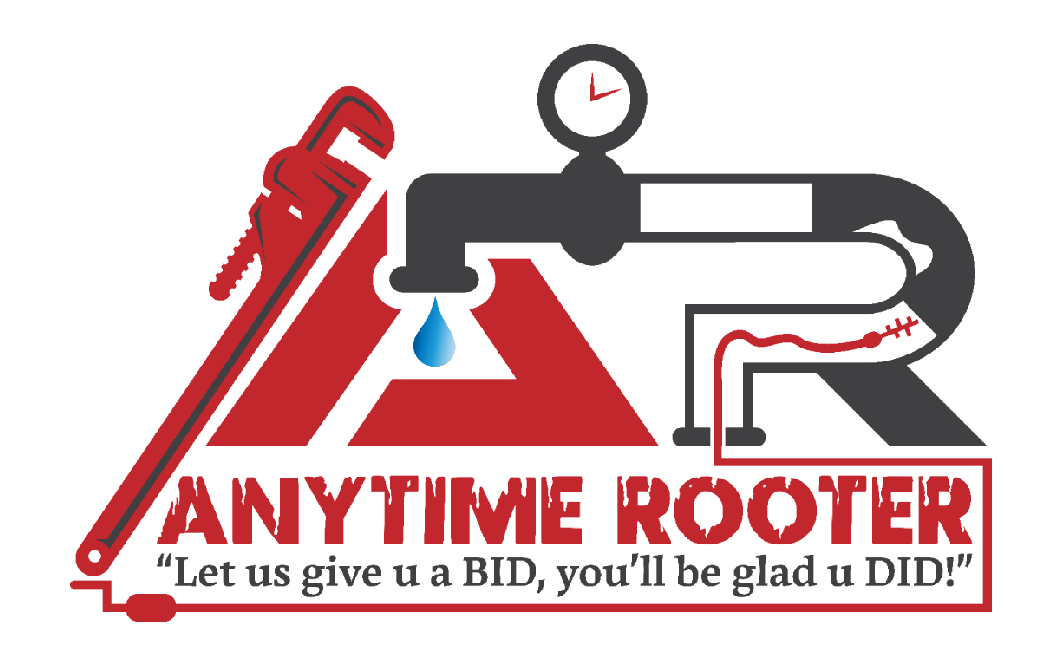
7 Warning Signs You Need Professional Drain & Rooter Services
Clogged drains and sewer line issues start small but quickly escalate into property damage, health hazards, and costly repairs if left unchecked. This guide highlights seven clear signs that signal you need professional drain cleaning or rooter services right away, helping Los Angeles County homeowners and property managers spot warning signals before backups or structural damage occur. After a quick overview of the signs, we’ll dive into common local causes, why professional methods beat DIY fixes, practical prevention tips, and when to call a trusted local expert. For homeowners and building managers seeking dependable help, Anytime Rooter is your local resource for Drain Cleaning and Rooter Services, with 24/7 Emergency Plumbers ready to respond to urgent situations. Keep reading to understand what each sign means, what safe, quick steps you can take, and how professional tools like hydrojet plumbing and sewer camera inspection pinpoint and resolve the root causes.
What Are the Most Common Signs Your Drains Need Professional Cleaning?

Your drains will give you clues when something’s wrong, from surface debris to main-line blockages or root intrusion. Catching these signs early means you can take targeted action: simple maintenance for minor issues or immediate professional help for bigger problems. Here’s a quick rundown of the seven most common indicators that professional drain cleaning is a must, along with a brief explanation and how urgent each one is.
- Slow drainage in sinks, tubs, or showers: Partial clogs mean less water flow, and it only gets worse over time.
- Gurgling noises from drains or toilets: Air trapped by slow-moving water suggests venting issues or partial blockages.
- Foul or persistent drain odors: Decomposing gunk or sewer gas needs immediate diagnosis to prevent health risks.
- Frequent or recurring clogs: If drains keep clogging, it often points to buildup in the main line or pipe damage.
- Water backing up in drains: Backflow means a serious blockage or potential pipe collapse and requires swift action.
- Multiple clogged drains simultaneously: When several fixtures clog at once, the main sewer line is usually the culprit.
- Changes in toilet water level or bubbling: Fluctuations signal venting problems or pressure imbalances linked to main-line issues.
These seven signs reveal patterns, from localized to system-wide problems, guiding you on whether to try safe fixes or call a pro immediately. The next sections break down each sign in detail, starting with why slow drainage is an early warning.
Why Is Slow Draining in Sinks, Tubs, or Showers a Warning Sign?
Slow draining means water sits and takes longer than usual to clear, often due to hair, soap scum, grease, or food particles clinging to pipe walls. This buildup restricts flow and traps more debris, slowing things down and paving the way for complete clogs. Homeowners can do a quick check: clear visible debris from the trap, run hot water, and test nearby fixtures to see if the issue is isolated or spreading. If slow draining continues, a professional can use tools like a sewer camera inspection to find the obstruction and techniques like hydrojet plumbing to blast away hardened buildup. Tackling slow drains early prevents backups and reduces the risk of pipe corrosion or root invasion making things worse.
What Do Gurgling Noises from Drains or Toilets Indicate?
Gurgling sounds happen when air gets pushed through water in traps because flow is blocked further down, creating bubbling and suction noises that can travel between fixtures. This is usually caused by partial clogs, poor venting, or main-line pressure issues. When vents are blocked or pipes are constricted, trapped air escapes through fixtures, making noise. Testing involves running water in multiple fixtures and observing if the sound occurs throughout the property, indicating a system-wide problem rather than just a local trap issue. A sewer camera inspection can confirm if the venting, main sewer, or branch drains are obstructed, and professional cleaning—especially hydrojet plumbing—can clear compacted buildup that’s preventing air from moving freely. Prompt diagnosis helps avoid situations where gurgling precedes sewage backups.
How Do Foul or Persistent Drain Odors Signal a Problem?
Foul odors from drains often come from decomposing organic matter, trapped food waste, or sewer gas escaping through dry traps or pipe cracks, posing a sanitary risk. A rotten-egg smell usually means hydrogen sulfide from sewer gas, while musty or sour smells suggest trapped waste in low-flow areas. Persistent odors demand an inspection because they might indicate leaking or broken pipes allowing gas or sewage into crawlspaces or basements, creating health and structural risks. Professionals use camera inspection to pinpoint odor sources and determine if cleaning, trap repair, or sewer-line repair is needed, and they might recommend hydrojetting for odor-causing buildup. Eliminating persistent odors quickly protects occupants and prevents long-term contamination.
Why Are Frequent or Recurring Clogs a Cause for Concern?
Frequent or recurring clogs—where the same drain or multiple fixtures clog despite repeated DIY fixes—usually point to an underlying structural issue or main-line problem, not just isolated debris. Recurrence means simple snaking or chemical cleaners only temporarily move the blockage; the root cause, like grease buildup or root intrusion, remains. Professional diagnosis often starts with a sewer camera inspection to assess pipe condition and blockage location, followed by targeted treatment like hydrojet plumbing to clear accumulated grease and scale. If left unaddressed, recurring clogs can weaken pipe walls, allow tree roots to exploit weaknesses, and eventually require more invasive trenching or trenchless sewer repair. Early professional intervention can turn recurring headaches into lasting solutions.
What Does Water Backing Up in Drains Mean for Your Plumbing?
Water backing up into fixtures or drains signals a near-complete or total obstruction in the drainage path, which can push sewage or contaminated water into living spaces and cause rapid property damage. Backups often result from severe blockages, collapsed pipe sections, or major root intrusions that stop outflow and pressurize the system. Immediate actions include stopping water use, shutting off devices feeding affected drains, and containing contaminated water to minimize exposure and damage. Professional rooter services are typically needed to clear or bypass the obstruction safely; technicians may perform a camera inspection to locate the problem and then use hydrojetting or main-line repair based on their findings. Quick professional response limits health risks and costly structural repairs.
How Do Multiple Clogged Drains Simultaneously Point to Main Sewer Issues?
When multiple fixtures in a home or building clog or back up at the same time, this pattern strongly suggests a main sewer line obstruction or damage affecting the entire drainage system. Common culprits include heavy grease buildup, significant tree root intrusion, or collapsed or misaligned joints in older pipes; the simultaneous nature of symptoms distinguishes main-line issues from isolated fixture clogs. Technicians rely on sewer camera inspection to confirm main-line problems and pinpoint the exact location and nature of the obstruction. Solutions can range from targeted hydrojet plumbing to trenchless sewer repair or full replacement if the pipe structure is compromised. Timely professional diagnosis prevents progressive damage and guides the least invasive, most cost-effective repair approach.
What Do Changes in Toilet Water Level or Bubbling Reveal?
Changes in toilet water level—whether rising, falling, or bubbling—indicate altered air pressure or a blockage affecting venting or the main drain. Bubbling occurs when air is forced through the bowl due to downstream obstructions or restricted vents that normally allow air to escape; fluctuating water levels when other fixtures are used point to shared drainage pathways under stress. Simple checks include running water in another fixture to see if the toilet reacts, helping to determine the scope. Persistent or severe changes warrant professional inspection, as they may signal a main-line blockage or partial collapse; technicians will use a camera inspection to diagnose and recommend cleaning, vent repair, or main-line intervention as needed. Correcting these pressure issues restores normal operation and prevents backups.
What Are the Common Causes of Drain Clogs in Los Angeles Homes and Businesses?
Drain clogs in Los Angeles County are a mix of everyday debris, local environmental factors, and aging infrastructure; understanding the causes helps prioritize prevention and repair. Issues range from kitchen grease that solidifies in cooler pipe sections to tree root intrusion driven by local tree species seeking moisture, and from hair and soap scum in bathroom drains to foreign objects flushed or poured incorrectly. Below is a quick table comparing common causes, how they form, and where they typically show up, helping you identify likely culprits and plan remediation.
Different clog causes form through distinct mechanisms and appear in specific fixtures or locations.
Understanding these cause-and-effect patterns allows for targeted prevention and helps determine whether a simple cleaning, hydrojetting, or a more extensive repair is needed. The next subsections explore each major cause with practical prevention and remediation context.
How Does Grease and Food Buildup Lead to Drain Blockages?
Grease and food particles combine in kitchen drain lines as warm liquids cool and congeal, sticking to pipe walls and gradually narrowing the passage. Over time, this fatty residue traps other debris—coffee grounds, fibers, and small solids—creating thick obstructions that resist snaking and chemical treatments. Simple household measures like using sink strainers, avoiding pouring grease down drains, and flushing with hot water after use can slow buildup but often don’t fully remove hardened deposits. Hydrojet plumbing is particularly effective for grease because high-pressure water scours pipe walls and restores diameter without damaging the sewer line when performed by trained technicians. For persistent kitchen clogs, a professional camera inspection helps determine if hydrojetting or a targeted repair is the best solution.
Why Do Hair and Soap Scum Accumulate and Cause Clogs?
Hair and soap scum bind together into dense, fibrous mats inside bathroom branch lines where flow is slower, progressively restricting drainage and trapping more debris. The chemistry of soap combines with minerals in water to form sticky residues that catch hair and skin flakes. Repeated accumulation reduces flow until plunging or snaking offers only temporary relief. Prevention includes using sink and shower strainers, regularly removing visible hair, and monthly hot-water flushes; however, deeply bonded scum may require professional mechanical cleaning or hydrojetting to fully clear. When recurring bathroom clogs persist despite preventive efforts, a camera inspection can confirm if pipe shape or hidden damage contributes to accumulation and guide a lasting solution.
How Does Tree Root Intrusion Affect Sewer Lines in Los Angeles?
Tree roots are drawn to moisture and nutrients around sewer lines and can penetrate small cracks or joints, growing inside pipes to form dense tangles that obstruct flow and damage the pipe structure. In Los Angeles County, mature landscaping and certain local tree species commonly contribute to root intrusion, and older clay or cast-iron pipes with imperfect joints are especially vulnerable. Signs include recurring clogs, slow drainage across multiple fixtures, and camera footage revealing root masses or pipe fractures. Professional responses range from root cutting and hydrojetting to trenchless sewer repair or localized replacement when roots have compromised the pipe wall; trenchless methods minimize landscaping disruption while restoring function.
What Role Do Foreign Objects and Non-Flushables Play in Drain Problems?
Flushing or pouring items not meant for drains—such as wipes, sanitary products, paper towels, grease, or large solids—creates immediate blockages or contributes to long-term buildup that traps other materials. These foreign objects often lodge at traps, bends, or narrow points and can cause single-fixture clogs or act as a nucleus for broader blockages. Proper disposal practices and clear household guidelines reduce these incidents, but stubborn objects sometimes require professional extraction using specialized tools or targeted excavation. When non-flushables are suspected, a camera inspection can locate obstructions precisely, informing a removal plan that minimizes further pipe damage.
How Do Aging or Damaged Pipes Contribute to Recurring Drain Issues?
Aging pipes suffer from corrosion, mineral scaling, misaligned joints, or partial collapse that alter flow patterns and create pockets where debris accumulates, leading to ongoing drainage problems even after cleaning. Structural issues may also allow root intrusion or soil infiltration and are often revealed during camera inspection as cracks, deformation, or collapsed sections. Repair options range from targeted replacement of damaged segments to trenchless sewer repair for longer runs, and addressing structural failure is crucial when recurring clogs persist despite thorough cleaning. Identifying aging-pipe problems early through inspection prevents repeated service calls and reduces long-term property and health risks.
Why Is Professional Drain Cleaning Essential Beyond DIY Methods?
Professional drain cleaning combines diagnostic accuracy with industrial-grade tools to deliver longer-lasting results than most DIY approaches. DIY methods—chemical cleaners, household snakes, and plungers—can offer temporary relief for surface obstructions but often fail to address hardened buildup, structural problems, or main-line blockages. Professionals use tools like hydrojet plumbing and sewer camera inspection to diagnose and remove blockages completely, minimizing damage and preventing recurrence. For Los Angeles County properties, where tree roots and aging infrastructure are common, professional techniques reduce the likelihood of repeated service calls and uncover issues that DIY methods can’t detect.
This comparison highlights why relying solely on DIY methods can lead to ongoing problems: they often fail to clean pipe walls, spot hidden damage, or resolve main-line issues. The next subsections discuss the specific risks of DIY options and how hydrojetting and camera inspection improve outcomes.
What Are the Risks of Using Chemical Drain Cleaners or DIY Tools?
Chemical drain cleaners contain caustic or oxidizing agents that can generate heat and toxic fumes, potentially damaging pipe materials—especially older metal or PVC—and degrading seals and gaskets over time. Repeated use can weaken pipes and mask underlying structural issues by temporarily opening a passage without removing adhered grease, scale, or roots. DIY tools like manual snakes can push obstructions deeper or scratch pipe walls, and improper techniques create safety hazards. Professionals recommend safer preventive practices and diagnostic steps like camera inspection to determine the true cause before resorting to aggressive treatments, ensuring repairs restore long-term function rather than creating future problems.
How Does Hydrojet Plumbing Effectively Clear Stubborn Clogs?
Hydrojet plumbing uses high-pressure water streams to scour pipe interiors, dislodging and washing away grease, scale, roots, and compacted debris that ordinary snaking can’t handle. This method restores the pipe’s internal diameter and improves flow by cleaning the pipe wall, not just creating a path through a clog. It’s especially effective for kitchens with heavy grease buildup and main lines with accumulated debris. Hydrojetting must be performed by trained technicians, as pressure settings and nozzle selection vary by pipe material and condition; incorrect use risks pipe damage. When paired with sewer camera inspection, hydrojetting provides a precise, thorough cleaning that reduces recurrence and delays the need for invasive replacement.
What Are the Advantages of Sewer Camera Inspection for Diagnosing Problems?
Sewer camera inspection sends a video camera through the drainage system to pinpoint the exact location and cause of blockages, reveal pipe condition, and identify defects like cracks, root intrusion, or misaligned joints. This diagnostic step eliminates guesswork, helps prioritize repairs, and often avoids unnecessary excavation by enabling trenchless options guided by accurate footage. Camera inspections also provide documentation for property managers and support transparent pricing by clarifying the scope before work begins. When combined with hydrojet plumbing, camera inspection verifies cleaning effectiveness and confirms whether structural repairs or future monitoring are needed.
When Should You Call Emergency Rooter Services for Drain Issues?
Emergency rooter services are necessary when drainage symptoms pose acute risks: active sewage backups into living spaces, large-scale water backup or flooding, sudden system failure across multiple fixtures, or health-threatening odors indicating sewer gas intrusion. Rapid, professional response minimizes exposure to contaminants and prevents escalating structural damage. While waiting for emergency assistance, homeowners should stop using water, isolate affected areas if safe, and avoid contact with contaminated water. Anytime Rooter offers 24/7 Emergency Plumbers to respond quickly to urgent situations and can perform emergency diagnosis and mitigation; professional intervention in these scenarios ensures safety and limits property loss.
How Can You Prevent Drain Problems with Regular Maintenance and Care?

Preventing drain issues involves a combination of routine homeowner habits and periodic professional maintenance to clear early buildups and identify emerging structural problems. Simple daily and weekly actions—like using strainers, avoiding grease down sinks, and periodically flushing lines with hot water—reduce common clog sources. Scheduled professional services, including camera inspections and hydrojet plumbing at recommended intervals, remove accumulations before they harden and allow technicians to monitor pipe health. Below is a maintenance schedule matrix outlining recommended actions, frequency, and benefits to help you plan proactive care.
A maintenance schedule helps property owners weigh frequency against benefits and costs to choose the right preventive program.
Using this matrix, owners can balance upfront maintenance expenses against the risk and cost of emergency repairs, and decide when to schedule professional Drain Cleaning and Rooter Services.
What Are Safe DIY Drain Maintenance Tips to Avoid Clogs?
Safe DIY maintenance reduces the need for professional interventions while protecting plumbing integrity: use strainers in sinks and showers to catch hair and solids, dispose of grease and food waste in compost or trash instead of down drains, and run hot water after dishwashing to keep grease in suspension until it reaches the sewer. Periodically use a manual drain snake for accessible P-traps or trap cleaning, but stop and call a professional if the obstruction resists or if multiple fixtures are affected. Avoid chemical cleaners for routine maintenance, as repeated use damages pipes and only offers temporary relief. These practices, combined with scheduled professional cleaning, form a balanced maintenance approach.
Why Is Scheduling Regular Professional Drain Cleaning Important?
Scheduling professional drain cleaning prevents minor accumulations from hardening into obstructions and identifies structural problems before they escalate into costly emergencies. For residential customers, annual or biennial professional services offer a practical balance, while commercial properties with heavy usage often benefit from annual or semi-annual schedules. Professional cleaning—using hydrojet plumbing and camera inspection—provides thorough removal of grease, scale, and invasive roots, and establishes an inspection baseline to monitor pipe condition over time. Working with a reputable provider ensures transparent pricing and service plans tailored to usage patterns, reducing lifetime plumbing costs and minimizing disruption.
How Does Water Filtration Improve Plumbing Health and Drain Performance?
Water filtration reduces mineral scale, sediment, and particulate matter that can accelerate pipe narrowing and trap organic material, thereby preserving flow and reducing clog frequency. Systems range from point-of-use filters that protect fixtures to whole-home filtration that treats supply water and limits scale formation in hot-water systems and pipes. Reduced scale and sediment lowers the rate of buildup in branch and main lines, extending the interval between professional cleanings and lowering the risk of corrosion-related failures. Consult with a plumber to select filtration appropriate for local water characteristics and household needs, and integrate filtration recommendations into your preventive maintenance plan.
What Should You Avoid Flushing or Pouring Down Drains?
Preventing clogs starts with strict rules about what never to send down drains: wipes (even those labeled flushable), sanitary products, paper towels, cooking grease, coffee grounds, and thick liquids that solidify. These items commonly cause both localized and main-line blockages and often require professional extraction or repair when they accumulate. For safe disposal, use composting options for appropriate food waste, seal and trash non-flushables, and collect grease in containers for disposal rather than pouring it down sinks. Clear household guidelines and visible disposal aids reduce accidental flushes and lower the incidence of emergency service calls.
- Top items to avoid down drains include wipes, grease, paper towels, sanitary products, and large solids.
- Safe alternatives include trash disposal, composting for food scraps, and grease collection in disposable containers.
These simple behavioral changes significantly reduce the risk of needing professional rooter interventions.
When Should You Contact Anytime Rooter for Professional Drain Cleaning or Rooter Services?
Contacting a professional becomes essential when signs point beyond safe DIY fixes or when emergencies threaten health and property; knowing what qualifies as urgent ensures timely action. Anytime Rooter, a family-owned and operated plumbing company based in Marina Del Rey, serves residential and commercial property owners and managers across Los Angeles County with Drain Cleaning and Rooter Services and 24/7 Emergency Plumbers. The company emphasizes licensed and insured technicians, transparent pricing with free estimates, and a satisfaction guarantee to support property owners facing drain and sewer issues. The subsections below list emergency signs, outline the company’s trust factors, explain pricing transparency, and describe quick booking steps.
What Emergency Signs Require Immediate Plumbing Assistance?
Immediate professional assistance is required for active sewage backups into occupied spaces, widespread backups affecting multiple fixtures, rapid flooding from drains, or strong sewer gas odors indicating possible roof vent or sewer gas migration. These situations create immediate health hazards and can cause rapid property damage, so homeowners should stop water use, isolate affected areas, and avoid contact with contaminated water while awaiting help. Calling an emergency rooter service ensures technicians arrive with the right equipment to diagnose and mitigate hazards promptly. Anytime Rooter’s 24/7 Emergency Plumbers are positioned to respond to these urgent scenarios and perform necessary emergency mitigation to reduce exposure and damage.
How Does Anytime Rooter Provide Trusted, Licensed, and Insured Services in Los Angeles County?
Anytime Rooter is presented as a family-owned and operated provider serving Los Angeles County from Marina Del Rey, offering credentials and service features designed to build trust: licensed and insured professionals who perform comprehensive diagnostics and repairs, a long-standing local presence that informs knowledge of regional issues, and a service model focused on transparent estimates and satisfaction guarantees. These attributes translate into clearer diagnosis, appropriate use of hydrojet plumbing and sewer camera inspection when indicated, and reduced risk of unnecessary repairs. Customers benefit from technicians who understand local tree-root tendencies, aging pipe materials, and installation patterns common in Los Angeles neighborhoods.
What Are the Transparent Pricing and Satisfaction Guarantees Offered?
Transparent pricing means customers receive clear, itemized estimates that detail diagnostic findings and recommended actions before work begins, along with explanations of factors influencing cost such as the scope of cleaning, the need for camera inspection, and the presence of structural repairs. Anytime Rooter emphasizes free estimates and a satisfaction guarantee to ensure customers understand service scope and outcomes, and pricing discussions align with diagnostic evidence from inspections or camera footage. Typical pricing factors include the severity and location of blockages, methods required (hydrojetting versus snaking), and any necessary repairs; transparent estimates empower property owners to make informed decisions.
How Can You Book Professional Drain Cleaning or Rooter Services Quickly?
To book professional drain cleaning or rooter services, prepare a brief description of the problem, note affected fixtures, and if possible, capture photos or video showing backups or visible leaks to help technicians triage and prioritize response. For emergencies involving active backups or flooding, request immediate emergency service so a 24/7 Emergency Plumber can be dispatched. Anytime Rooter offers both emergency response and scheduled service options for routine maintenance and diagnostics; sharing diagnostic details upfront and any recent observations speeds accurate triage and supports quicker arrival of the right tools and technicians.
Using these steps ensures an efficient path from symptom detection to professional resolution without unnecessary delay or expense.
